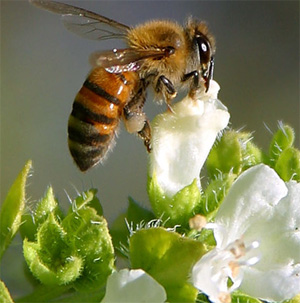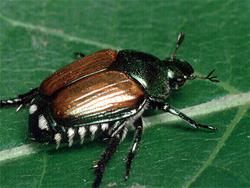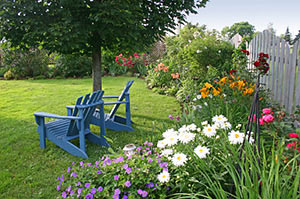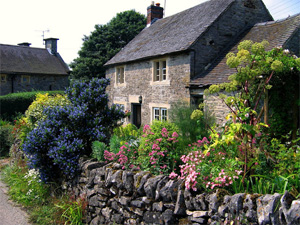
So how does pollination work? Many pollinators, such as adult butterflies and moths, live on nectar and other sweet liquids, such as nectar in flowers and tree sap. While they are busy eating nectar, pollen collects on their legs or other parts of their body, and is transferred to the next flower they visit, thus fertilizing that flower.
Among the following insects you'll find some that are specialists - limiting the flowers they visit to certain species - while other are generalists and will visit a wide variety of flowers. Both are needed for a healthy ecosystem, which a garden is a small microcosm of. Various garden pollinating species include but are not limited to the following:
Butterflies and Moths
Butterflies prefer brightly colored flowers with a light scent and broad petals for landing, so zinnias, coneflowers, and brightly colored daisies are strong attractants.
Although moths are usually considered nothing more than the homely cousins of butterflies, they play an important role in the pollination process. While adult moths spread pollen much like butterflies, they do much of their work after sundown, therefore pollinating night blooming flowers. To attract moths to your garden; plant moonflowers, evening primrose, and night blooming lilies such as the Casablanca Lily.
Lacewings
Another often underappreciated nocturnal pollinator is the lacewing. Not only do the adults pollinate flowers, but they eat "pest" or destructive insects, such as aphids, and mites, while their immature larvae prey on aphids, whitefly larvae, caterpillar eggs and mealybugs. Some gardeners actually purchase lacewings online and release them into their gardens as a form of natural pest control.
Hummingbirds
 image: Wikimedia Commons
image: Wikimedia Commons
Bees
Although bees will pollinate flowers of just about any size or shape, they prefer a strong, sweet scent. Adding Lavender and Monarda, (Bergamot or Bee Balm), and other sweet smelling blooms to your garden will keep bees around to pollinate fruits and vegetables.
One interesting fact about this pollinator is that bees don't actually live on nectar. They ingest the nectar, allow it to mix with enzymes in their stomach, and then regurgitate it as honey. Later, they eat the honey. Although bees occasionally also eat pollen, it is usually transferred to another flower.
Flies
Although people generally think of flies as pests; in the garden they are second only to bees in their pollinating prowess. Unlike butterflies or hummingbirds, flies generally aren't picky about flower shape or color. They will pollinate just about any flower, whether bright and colorful, or a simple white.
So plant flowers in your vegetable garden. You can enjoy their beautiful colors and scents, while knowing that you are increasing your garden's yield.
Resources
Best Plants to Attract Beneficial Insects
Pollinating Insects in the Garden



